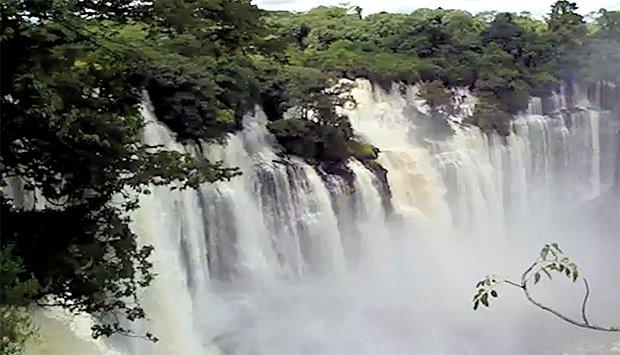Africa-Press – Angola. The province of Malanje has historical sites considered monuments awaiting their classification as national cultural, natural and historical heritage, capable of contributing to sustainable tourism, generating thousands of jobs and raising revenue for the State coffers.
Known as the land of the Giant Sable Antelope, Malanje has a wide range of natural, historical and architectural heritages.
As an example, the scenic town of Pedras Negras de Pungo a Ndongo, in the municipality of Cacuso, 72 kilometers west of the city of Malanje, has been waiting since 2007 for its classification by the Ministry of Culture, Tourism and Environment as a national historic heritage. .
The natural heritage is also very privileged for having the majestic formations of stones, which are at the base of the originality of the name of the commune of Pungo a Ndongo, and that make the region a good place for the practice of tourism.
The region is also of high historical significance, as it serves as a crossing point for the sovereigns of the Kingdom of Ndongo, in the case of Ngola Kiluanje and Rainha Nginga Mbande, who left the impression of their footprints.
Regardless, Pungo a Ndongo is a holy place of faith as it was the area where the first Catholic and Methodist missionaries settled, the latter in the town of Quiongua, considered by many to be the cradle of Methodism in Angola.
In terms of civil architecture, the region has the former Palace of the Colonial Administration, which is a classified heritage. Meanwhile, in the religious architecture is the old Mission of Quéssua, which is approximately 12 kilometers from the city of Malanje.
With regard to military architecture, the fortress of Calandula stands out, another classified heritage, although it has a classification process based on its complete destruction by the action of war.
Malanje province currently has 60 identified tourist and historical sites, some of which are already in the process of being classified as a monument, with only a few legal procedures remaining.
Conservation State
The state of conservation of some cultural heritage, especially those that are classified and that have been used by citizens, in this case, the facilities where the Municipal Administration of Malanje operates, as well as the Church of Quéssua, have been effectively protected.
In terms of landscape areas, Malanje has the Kunda-do Bale caves, the Calandula falls, elected as one of the seven wonders of Angola with 100 meters of altitude, the town of Salto de Cavalo and the Pedra Negras de Pungo. to Ndongo.
Bathing Areas
Malanje also stands out with the bathing areas of the Kwanza River, in the municipality of Cangandala, 28 kilometers south of the city, which is very popular with national and foreign tourists and which should also deserve the maximum attention for its preservation, in a way that to protect the environment that surrounds it.
It is also a historic area because it was a place where some black slaves were concentrated and taken to other parts of the country for commercial purposes during colonial domination, according to history.
It should be noted that the government has in its portfolio projects for the conservation of heritage and historical places, which should allow interactivity with the municipal administrations that hold these cultural heritage assets for their preservation, dissemination and promotion.
For More News And Analysis About Angola Follow Africa-Press






